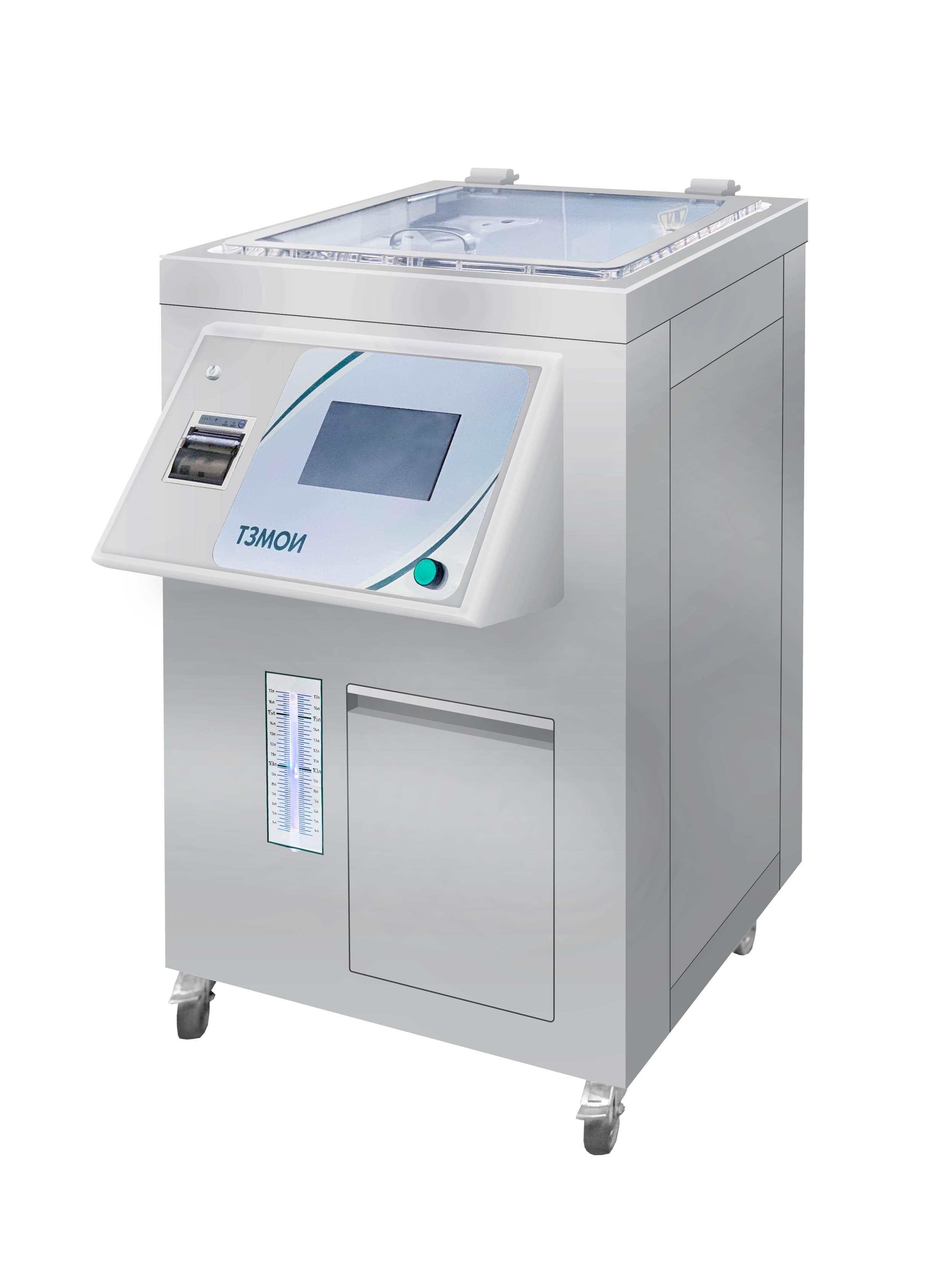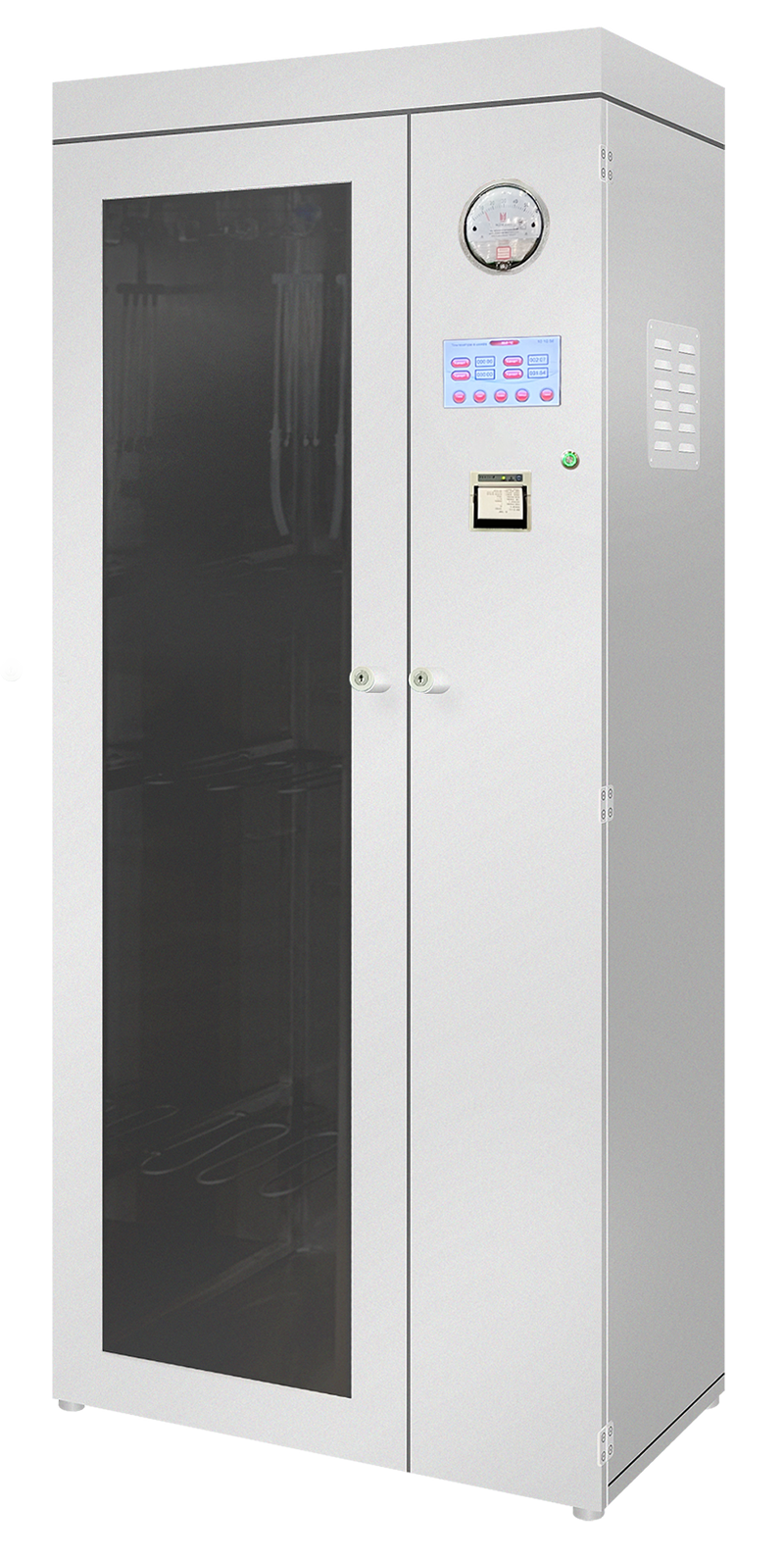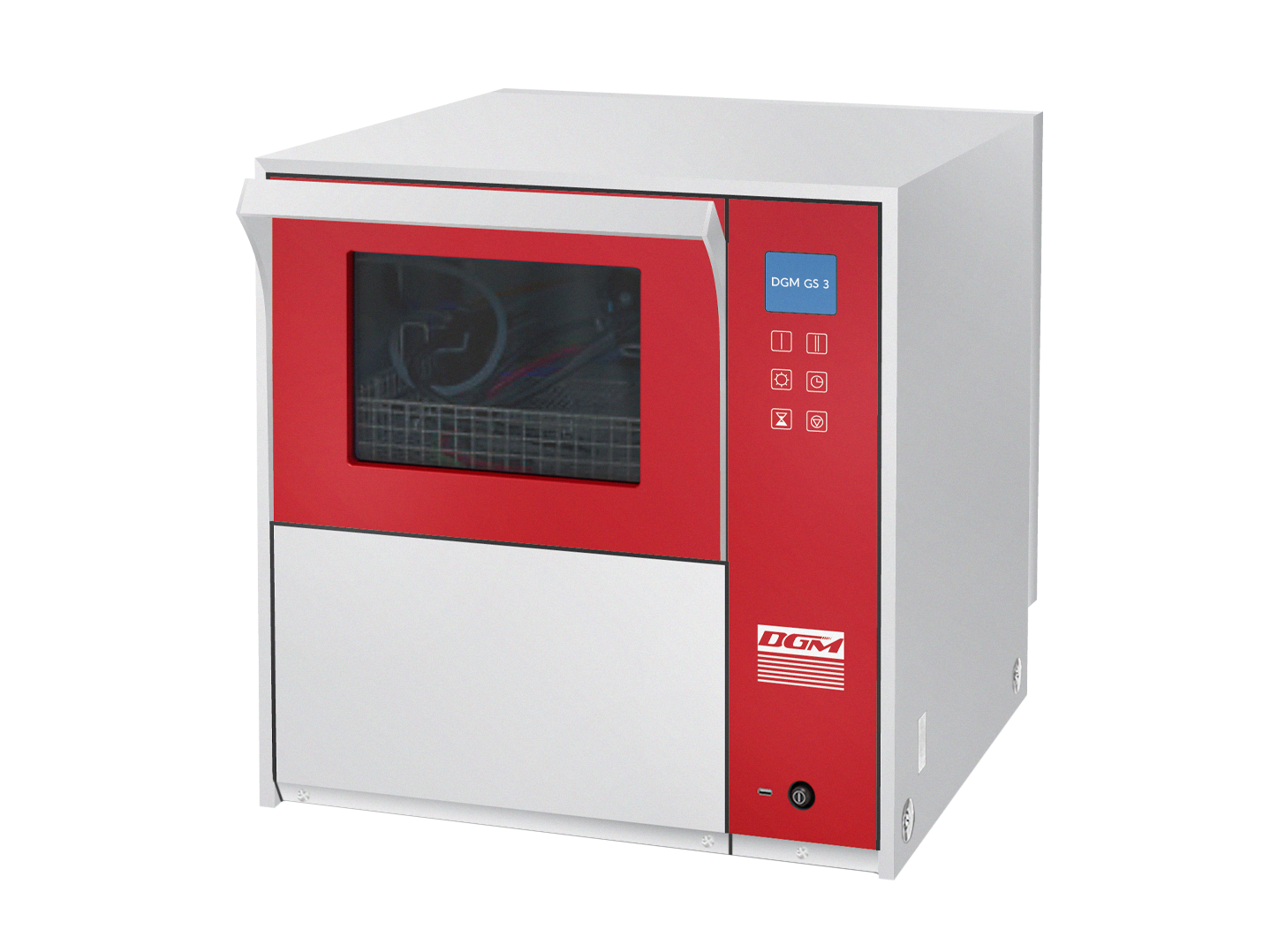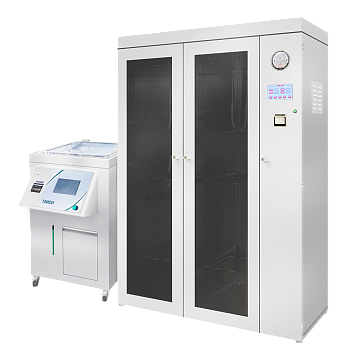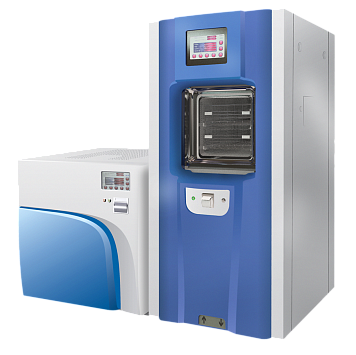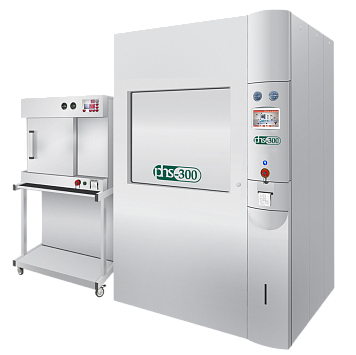Current Sanitary and Epidemiological Rules SP 3.1 1275-03 "Prevention of infectious diseases during endoscopic manipulations" and changes to them (Sanitary and Epidemiological Rules SP 3.1. 2659-10) determine a strict sequence of processing stages of flexible endoscopes, however, many endoscopic rooms and units encounter numerous difficulties in their treatment, and at times they make various mistakes.
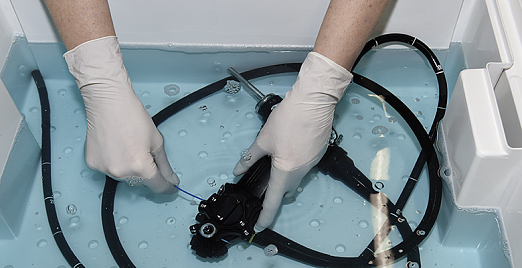
The causes of infection transmission in endoscopy are:
-
insufficient cleaning, including refusal of mechanical cleaning with brushes;
-
ineffective high-level disinfection (use of agents based only on quaternary ammonium compounds (QAC), which are not sterilants, or agents, for which no sterilization regimes have been developed);
-
use of faulty, non-submersible endoscopes;
-
use of contaminated medicines, rinsing water;
-
insufficient drying of endoscopes;
-
secondary contamination during washing, drying, storage or transportation of endoscopes;
-
use of outdated semi-automatic devices for processing endoscopes, including the KRONT-UDE unit for cleaning endoscopes.
Treatment steps for flexible endoscopes: pre-cleaning, leak test, final cleaning (pre-sterilization if endoscopes are to be sterilized), rinsing and drying after cleaning, high-level disinfection (HLD) / sterilization, rinsing and drying of endoscopes. Subsequently, treated endoscopes are stored in aseptic conditions.
When carrying out an automated treatment cycle, it is imperative to complete all stages of manual cleaning of the endoscope prior to the HLD / sterilization stage!
-
Preliminary cleaning is carried out in the procedural room immediately after the endoscopic manipulation is completed and is designed to remove the main contaminants from the surface and channels of the endoscope.
-
Aspirate air for a few seconds immediately after the procedure.
-
Wipe the working part of the endoscope from the proximal to the distal end with a cloth soaked in a detergent solution.
-
Lower the distal end of the endoscope into a container with a detergent solution and alternately aspirate the solution and air through the instrument (200–250 ml of solution). Complete the procedure with air aspiration.
-
Flush and purge the air and water channels of the endoscope.
-
Flush the additional channels of the endoscope.
-
Disconnect the endoscope from the illuminator, aspirating suction.
-
Move the packed endoscope (sheet, closed container, tray) to the washing and disinfection room.
Errors during pre-cleaning:
-
carried out quickly, without observing the protocol;
-
air-water and instrumental channels are not pumped with a sufficient volume of a cleaning solution;
-
the flushing container is not changed (not treated) after each patient.
Leak test
Tightness test makes it possible to identify external and internal damages of the endoscope before it is immersed in chemical solutions, in order to avoid serious damage in contact with them:
-
Remove all valves and other parts if specified in the manufacturer's instructions.
-
Connect the tester to the air supply and verify that it is supplied.
-
Connect the tester to the endoscope and supply air to pressurize the device.
-
Submerge the endoscope completely under water. Using the screws of the control unit, bend the distal part in all directions, observing the presence or absence of a trickle of air bubbles. Long-term presence of a "path" of air bubbles indicates a violation of the tightness of the endoscope.
-
After completing the leak test, release the pressure (by turning off the air supply to the tester or opening the pressure gauge valve), remove the endoscope (the endoscope connector with the tester connected) from the water, and after a few seconds disconnect the tester.
Errors in the endoscope tightness test:
-
refusal to conduct it;
-
the test is performed irregularly, and sometimes only after the treatment of the endoscope;
-
the endoscope is not completely immersed in water.
Pre-sterilization cleaning
Final / pre-sterilization cleaning is the most important stage of treatment. It is carried out in order to completely remove organic and inorganic contaminants.
-
Fill a container (sink) of at least 10 liters with a freshly prepared detergent solution.
-
Connect the all-channel irrigator, adapters and flushing tubes to the endoscope.
-
Immerse the removable parts and endoscope completely in the detergent solution and fill all channels with it using a syringe (pump). Keep the exposure specified in the instructions for the use of the agent applied.
-
After the end of the exposure, rinse the channels several times with a cleaning solution, disconnect the all-channel irrigator, adapters and tubes.
-
Clean the outer surface of the endoscope from contamination with napkins (disposable sponges), and the end part of the insertable tube with a special brush. When performing mechanical cleaning, always keep the endoscope completely submerged in the solution to avoid splashing contaminated liquid.
-
Clean the ports, the suction valve, the air / water valve, the instrument channel valve and other removable parts, holes and cavities with special brushes. Carry out cleaning under a detergent solution.
-
Brush all accessible endoscope channels. Use only serviceable brushes that match the diameter of the endoscope treated. Each time the brush leaves the channel and the port, it must be cleaned in the solution to remove any visible contamination. Brushing is continued until visible particles of biological contaminants are no longer detected on it. Reusable brushes must subsequently be disinfected, cleaned before sterilization and sterilized.
-
After completing the cleaning of the channels, connect the all-channel irrigator, the adapters for additional channels, and the flushing tubes, through which all channels must be rinsed again with a detergent solution to remove residual contaminants.
-
Remove the cleaning solution from the channels with air using a syringe (pump).
Errors during final / pre-sterilization cleaning:
-
containers (sinks) of less than 10 liters are used;
-
the endoscope is not completely immersed in the cleaning solution;
-
the cleaning solution is used repeatedly;
-
the valves are not removed from the endoscope;
-
the all-channel irrigator, the adapters, and the tubes for canal flushing are not used;
-
additional channels of the endoscope are not flushed;
-
when cleaning, no brushes are used to clean the endoscope outlets, channels and valves;
-
worn or damaged brushes are used, which do not clean well and can perforate the endoscope channels;
-
reusable cleaning brushes are not subsequently treated (sterilized).
Rinsing and drying
The endoscope is rinsed and dried after cleaning to remove the detergent from the endoscope surface and channels and to prevent dilution of HLD / sterilization agent.
-
Immerse the endoscope with the connected multi-channel irrigator, adapters, tubes and removable parts in a container / sink with freshly poured tap water.
-
Thoroughly clean the outer surfaces of the endoscope and all removable parts with napkins.
-
Fill the channels and rinse them with water several times using a syringe (pump).
-
Remove water from all channels with air using a syringe (pump).
-
Transfer the endoscope with the attached multi-channel irrigator, adapters, tubes and removable parts to a clean sheet or clean work surface.
-
Dry the outer surface of the endoscope with clean cloths.
-
Dry the canals with air using a syringe (pump) through the multi-channel irrigator, adapters and tubes.
Drying errors:
-
the endoscope is washed in a small volume of water;
-
washing water is not changed;
-
the endoscope channels are not thoroughly washed with water;
-
the outer surface of the endoscope and its channels are not dried after washing;
-
when drying, the distal end of the endoscope is not covered with a napkin to prevent personnel from becoming infected with an infectious aerosol.
HLD / sterilization
HLD / sterilization is performed to decontaminate the endoscope.
-
Completely immerse the endoscope with the attached irrigator, adapters, tubes and all removable parts in a container with a HLD or sterilization agent.
-
Fill all channels of the endoscope with the agent, expelling air from them with a syringe.
-
Remove air bubbles from the surface of the endoscope jacket with a sterile tissue.
-
Cover the container with a tight-fitting lid.
-
Set a timer and maintain the required exposure for the chemical agent.
-
Further manipulations are carried out under conditions that exclude secondary contamination of the endoscope with microorganisms. The staff perform hand hygiene and put on sterile gloves and a mask.
-
After the end of the exposure, displace the solution for HLD / sterilization from the channels with air.
Errors during HLD / sterilization:
-
the endoscope is not completely immersed in the solution;
-
the endoscope channels are not filled with disinfectant / sterilant;
-
the container for the respiratory protection of employees is not closed with a lid, the exposure is not maintained;
-
the reusable disinfectant / sterilizing solution is not tested for potency with test strips.
Rinsing and drying
The endoscopes are rinsed and dried to remove the chemical solution to prevent its negative effects on the patient.
-
Transfer the endoscope with the attached irrigator, adapters, tubes and all removable parts into a container with drinking water (endoscopes for examining the gastrointestinal tract), with sterile or boiled water (bronchoscopes), into a sterile container with sterile water (endoscopes for sterile manipulations).
-
Thoroughly wash the endoscope surface and removable parts, and then rinse all channels with water. The washing duration and the frequency of changing the water must comply with the instructions for the agent used for HLD / sterilization.
-
Transfer the endoscope with the attached irrigator, adapters and tubes to a sterile sheet.
-
Thoroughly purge all channels with air using a sterile syringe through an all-channel irrigator, adapters or other device.
-
For additional drying of the canals, it is recommended to rinse them with 70% pharmacopoeial alcohol (endoscopes subjected to HLD).
-
Blow out the channels with air.
-
Remove the all-channel irrigator, adapters and tubes.
-
Dry the outer surfaces of the endoscope with sterile material.
-
Dry all removable parts thoroughly.
Errors in rinsing and drying endoscopes:
-
water is used that does not meet the requirements of SP
-
insufficient drying of the outer surface of the endoscope
-
channels of the endoscope are not sufficiently dried
Storage
Endoscopes are stored and transported in conditions preventing their secondary contamination.
Removable parts are stored separately from the endoscope in a sterile material.
Endoscope without packaging (on a stand in a suspended form, provided that contact contamination is avoided) or in a non-tight sterile package is stored for no more than 3 hours, after which it is subjected to repeated HLD before use.
For more than 3 hours and between shifts, endoscopes should be stored under aseptic conditions (in hermetic sterile packaging or specialized cabinets).
Endoscopes are only transported in closed tight or non-tight sterile packaging using special trays (trolleys).
Endoscopes for sterile procedures are stored only under sterile conditions.
Errors during storage and transportation of endoscopes:
-
storage of the endoscope on racks with the possibility of contact contamination;
-
for storage, only the insertable part of the endoscope is placed in a sterile bag;
-
the endoscope is stored without being placed in a sterile bag in a cabinet that is not certified for storing flexible endoscopes under aseptic conditions;
-
the endoscope is stored in a cabinet equipped with germicidal lamps;
-
the endoscope is transported in non-sterile packaging or simply in a tray.
The container for supplying water to the endoscope must be cleaned daily, followed by HLD / sterilization, and only sterile water must be poured into it.
For more detailed information about the equipment, you can contact us using any of the methods specified in the "Contacts"



